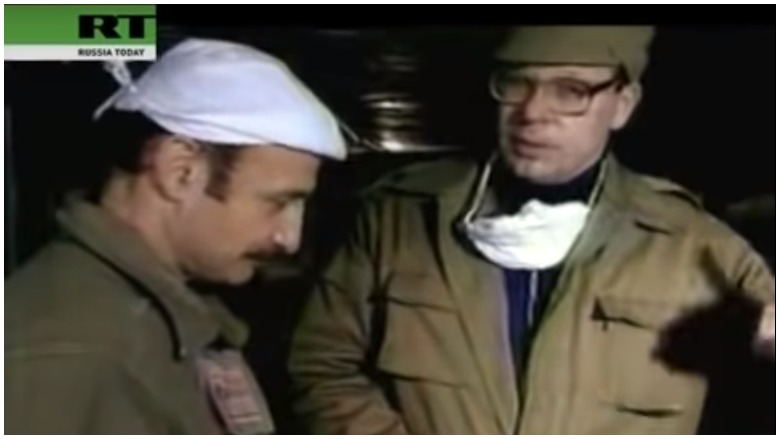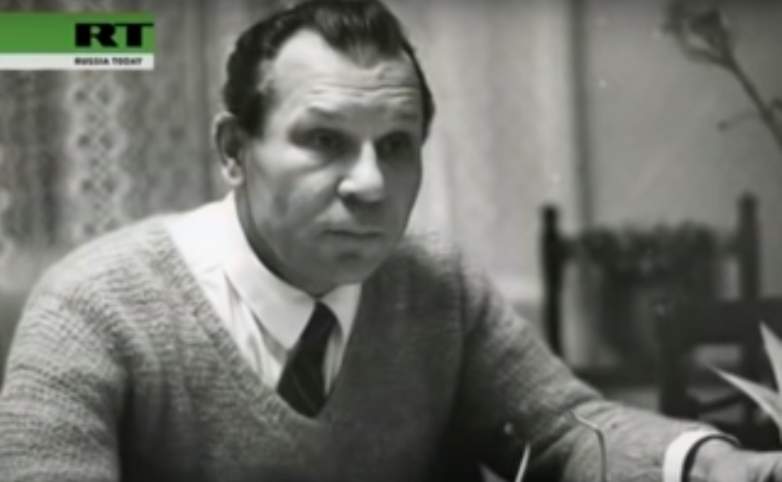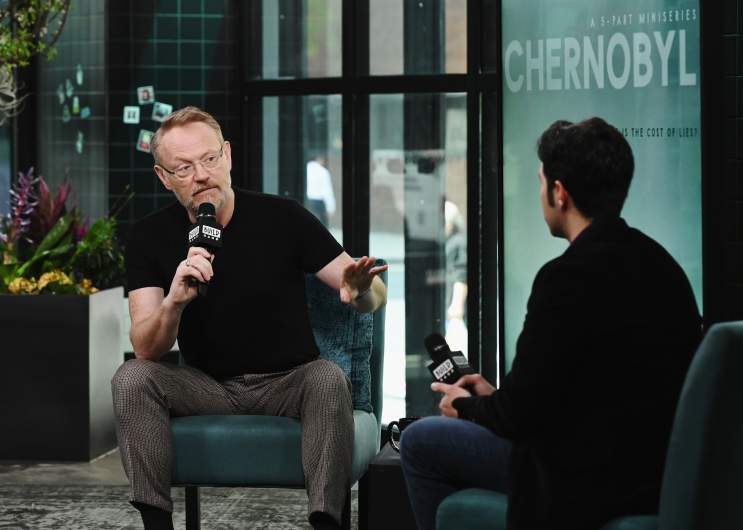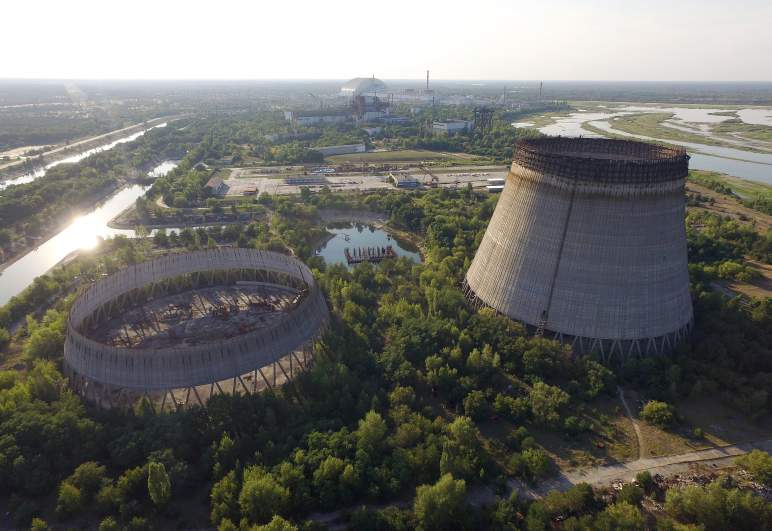
Valery Legasov was a Soviet chemist who investigated what caused the Chernobyl nuclear power plant disaster on April 26, 1986. The fire and explosion was widely regarded as the most catastrophic man-made disaster in history. While Soviet officials attempted to downplay the widespread impact of the problem, Legasov was the first person to push for evacuation, likely saving thousands of lives.
He suffered radiation poisoning himself, and died by suicide two years and one day after the explosion. His legacy lives on through his research that pinpointed the cause of the disaster and helped to prevent any similar disasters from happening in the future.
Legasov is portrayed as one of the real-life heroes in HBO’s miniseries Chernobyl, which aired at 9 p.m. EST May 6 and on Sky Atlantic at 9 p.m. May 7 in the UK. The final episode of the five-part series airs at 9 pm. EST June 3. This post contains light spoilers for the HBOs miniseries.
Chernobyl episode 5, the finale episode of the HBO miniseries, airs tonight at 9 EST. The five-part miniseries is based on one of the world’s worst man-made disasters in history.
Rotten Tomatoes Gave the show a 94 percent rating. Critics wrote, “Chernobyl rivets with a creeping dread that never dissipates, dramatizing a national tragedy with sterling craft and an intelligent dissection of institutional rot.”
Here’s what you need to know:
1. Legasov demanded the areas surrounding the Chernobyl power plant be evacuated

YouTubeValery Legasov discussed the evacuation of
Legasov ordered and organized the mass exodus of Pripyat, Ukraine and surrounding towns while Soviet Union officials denied the threat to the public.
“It must be hard to believe, but nobody thought about it,” his daughter, Inga Legasova told RT News Channel in a 2008 interview.
It took 36 hours for officials to agree to the evacuation, said Nikolay Ryzhkov, the Head of Cabinet from 1985 to 1990. Legasov brought in buses and trains to evacuate the people. He told them it was temporary, even though he knew it was permanent.
“I knew that the town had been evacuated forever, but I couldn’t find the moral strength to tell it to the people,” he wrote in his memoirs. “Besides, if we told them that they were leaving forever, it would take quite a long time to pack their bags.”
Watch the full RT News Channel episode here:
He was unsuccessful in coaxing officials to cancel the May Day Parade. Thousands of people flocked to Kiev, Ukraine May 1 to celebrate International Workers’ Day less than 400 miles from Chernobyl and just a few days after the explosion.
There is much debate over how many people died from the Chernobyl disaster. Two people died immediately, and 29 others died within a few days at the hospital. The effects of long-term radiation poisoning are more difficult to pinpoint. A 2006 study by Elisabeth Cardis of the International Agency for Research on Cancer in Lyon, France predicts 16,000 cases of thyroid cancer and 25,000 cases of other cancers will be contracted by 2065 because of exposure to radiation from Chernobyl.
2. Legasov suffered from radiation poisoning.
Shortly after Legasov reported to the Chernobyl disaster site, he became “very tan” and so weak he could barely talk, according to his daughter, Inga Legasova.
She speculated he knew from his first day on the scene he would eventually die. His health deteriorated rapidly, and he was hospitalized with severe radiation poisoning, according to Legasova. He was barely eating or sleeping, she said. Legasov was eventually released and returned to work.
After his death, radiation was found on his belongings, Chernobyl Liquidator Aleksandr Borovoy told RT News Channel. He ordered Legasov’s belongings be destroyed.
“I went to his office and laid everything out on the table. I turned on the meter and it showed radiation levels, and it continued to just beep and beep,” he said.
3. Legasov died by suicide one day after the second anniversary of the Chernobyl power plant explosion

YouTubeValery Legasov died by suicide April 27, 1988, one day after the two year anniversary of the Chernobyl disaster.
Legasov died one day after the second anniversary of the Chernobyl explosion and fire, according to his obituary.
Writers of the HBO mini-series grappled with how to address a main character’s real-life suicide.
“One of the choices we had to make was how to deal with the fact that our hero ultimately ends up taking his own life,” Writer and Executive Producer Craig Mazin told HBO. “We felt from the very start that we should begin with it.”
Mazin said he wanted viewers to ask themselves “Why, and what now?”
“Right away, you know what the cost of it was,” actor Jared Harris told HBO. Harris (Mad Men, Fringe, King George IV) portrays Legasov on the HBO show.
While causes of suicide are notoriously layered and complicated, Legasov’s daughter said her father had “an excessive sense of responsibility” in an interview with RT News Channel. She said he wished he could have done more to protect people during and after the disaster. He also endured a series of disappointments during his career following the blast.
4. A former nuclear power plant was the film set for HBO’s miniseries

GettyNEW YORK, NEW YORK – APRIL 23: Jared Harris attends the Build Series to discuss “Chernobyl” at Build Studio on April 23, 2019 in New York City. (Photo by Nicholas Hunt/Getty Images)
Harris told Build there were about 20 power plants built in the former Soviet Union with the same design as Chernobyl. The HBO miniseries was filmed at one of them, located in Lithuania.
Watch Jared Harris discuss a real-life Chernobyl story that touched him:
“We were there, which is wild,” he said in the video interview.
Guards armed with machine guns accompanied the cast on set. The plant was ordered to be decommissioned.
“Supposedly all the nuclear material had been taken out, but rather cryptically they told us that we weren’t allowed to shoot on, like, a Tuesday before 4 p.m. because they were still taking the material out,” Harris said.
5. Legasov issued a report to prevent a future nuclear disaster

GettyCHORNOBYL, UKRAINE – AUGUST 18: In this aerial view abandoned, partially-completed cooling towers stand at the Chernobyl nuclear power plant as the new, giant enclosure that covers devastated reactor number four stands behind on August 18, 2017 near Chornobyl, Ukraine. (Photo by Sean Gallup/Getty Images)
While the Soviet Union delayed reporting of the disaster, Legasov investigated the cause of the explosion and compiled a 400-page report, according to the Associated Press. He presented his findings during a five-hour presentation to the International Atomic Energy Agency, the article said. He attributed the cause to human error.
“Legasov’s foreign colleagues in nuclear power research had praised his openness in discussing the causes and effects of the Chernobyl accident, in contrast to initial Soviet delay in releasing information about it,” the Associated Press article said.
In his Testament published after his death, He described the Chernobyl disaster as an “inevitable apotheosis” of the USSR’s economic system, according to the World Nuclear Association.
He wrote in his Testament, “When one considers the chain of events leading up to the Chernobyl accident, why one person behaved in such a way and why another person behaved in another, etc., it is impossible to find a single culprit, a single initiator of events, because it was like a closed circle.”